|
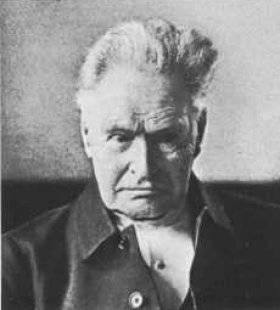 Foremost among all those involved in the design and construction of the Great Clock will always be Edmund Beckett Denison (Lord Grimthorpe) (1816-1905). The success of the Great Clock, in particular its ability to meet the specification that the hours be struck accurate to one second, is due to his inspired invention of the double three-legged gravity escapement which has proven so successful in isolating the pendulum from the influences of forces on the hands. The success of this invention achieved such universal recognition that it became a standard component of turret clocks. Although he was not a diplomat, it was Denison's tenacity and conviction which brought about successful completion of the clock. Foremost among all those involved in the design and construction of the Great Clock will always be Edmund Beckett Denison (Lord Grimthorpe) (1816-1905). The success of the Great Clock, in particular its ability to meet the specification that the hours be struck accurate to one second, is due to his inspired invention of the double three-legged gravity escapement which has proven so successful in isolating the pendulum from the influences of forces on the hands. The success of this invention achieved such universal recognition that it became a standard component of turret clocks. Although he was not a diplomat, it was Denison's tenacity and conviction which brought about successful completion of the clock.
Denison studied law at Trinity College, Cambridge. It is likely he became familiar with the chimes of the clock of Great St. Mary's (the Cambridge Chimes, now more commonly called the Westminster Chimes) during this period. Denison practiced as a lawyer and established a fearsome reputation in this as well as other areas. The acrimonious disputes in which he became involved over the Great Clock were certainly not unique to that situation. He became Lord Grimthorpe in 1886. |
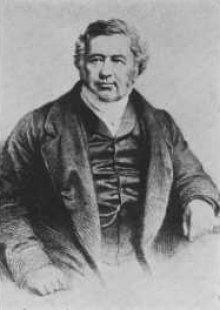 Denison collaborated closely with Edward John Dent (?-1853) who constructed the clock. Dent had completed a very successful public clock for the Royal Exchange under Airy's direction and was the clockmaker of choice of both Denison and Airy. Turret clocks were not his main interest and Dent had won awards for his development of the marine chronometer. Both Denison and Airy were impressed with his progressive approach. Dent died before the clock was completed and his nephew, Frederick Rippon became head of the firm having satisfied his uncle's condition that he change his surname to Dent. The work and installation was completed by Frederick Dent after his uncle's death, and the inscription on the frame of the clock bears his name. Denison collaborated closely with Edward John Dent (?-1853) who constructed the clock. Dent had completed a very successful public clock for the Royal Exchange under Airy's direction and was the clockmaker of choice of both Denison and Airy. Turret clocks were not his main interest and Dent had won awards for his development of the marine chronometer. Both Denison and Airy were impressed with his progressive approach. Dent died before the clock was completed and his nephew, Frederick Rippon became head of the firm having satisfied his uncle's condition that he change his surname to Dent. The work and installation was completed by Frederick Dent after his uncle's death, and the inscription on the frame of the clock bears his name. |
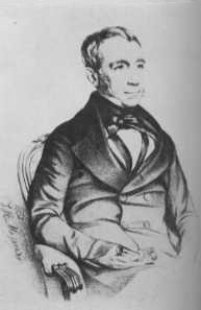 The Royal Astronomer, Sir George Biddell Airy was the first referee appointed to the construction the Great Clock. It was Airy who prepared the initial specification in 1846 which called for a clock which would strike the hours accurate to one second. Denison was subsequently appointed joint referee and revised Airy's specification and Dent's designs. Their working relationship was not always harmonious and Denison's lack of cooperation with the architect, Sir Charles Barry, led to Airy's temporary resignation as referee in 1853. The Royal Astronomer, Sir George Biddell Airy was the first referee appointed to the construction the Great Clock. It was Airy who prepared the initial specification in 1846 which called for a clock which would strike the hours accurate to one second. Denison was subsequently appointed joint referee and revised Airy's specification and Dent's designs. Their working relationship was not always harmonious and Denison's lack of cooperation with the architect, Sir Charles Barry, led to Airy's temporary resignation as referee in 1853. |
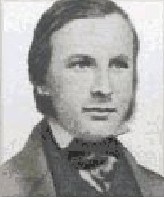 Although the principal architect of the Palace and the clocktower was Sir Charles Barry (1794-1860), it was Augustus Welby Northmore Pugin (1812-1852) who undertook the detailed design of the dials and the decoration about the dials and belfry. It is probably Pugin, therefore, who was responsible for the unusual 'IV' rather than the customary 'IIII' on the dials. It is also Pugin who persuaded Charles Barry that dials 30 feet in diameter would be too large and reduced them to 23 feet. Although the principal architect of the Palace and the clocktower was Sir Charles Barry (1794-1860), it was Augustus Welby Northmore Pugin (1812-1852) who undertook the detailed design of the dials and the decoration about the dials and belfry. It is probably Pugin, therefore, who was responsible for the unusual 'IV' rather than the customary 'IIII' on the dials. It is also Pugin who persuaded Charles Barry that dials 30 feet in diameter would be too large and reduced them to 23 feet. |
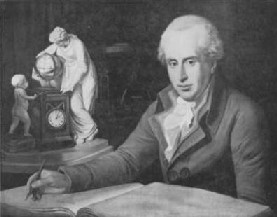 Benjamin Lewis Vulliamy (1780-1854) was well known as an accomplished clockmaker who had many fine turret clocks to his credit. Charles Barry originally invited Vulliamy alone to submit tenders for not only the Great Clock, but also for all the other clocks which would be required throughout the New Palace. Vulliamy was unhappy with Airy being chosen as referee and was most indignant when Dent succeeded in obtaining the contract. In particular, he stated publicly his considered opinion that it was impossible to make a clock of such size keep time to within one second. He did not live to see the successful completion of the clock. Benjamin Lewis Vulliamy (1780-1854) was well known as an accomplished clockmaker who had many fine turret clocks to his credit. Charles Barry originally invited Vulliamy alone to submit tenders for not only the Great Clock, but also for all the other clocks which would be required throughout the New Palace. Vulliamy was unhappy with Airy being chosen as referee and was most indignant when Dent succeeded in obtaining the contract. In particular, he stated publicly his considered opinion that it was impossible to make a clock of such size keep time to within one second. He did not live to see the successful completion of the clock. |




